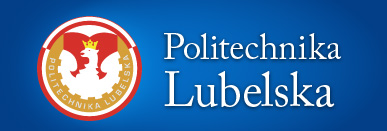Increasing the energy efficiency of dwelling houses: case study of residential quarter in Upper Silesia, Poland
https://orcid.org/0000-0002-1789-4288
© 2019 Budownictwo i Architektura. Publikacja na licencji Creative Commons Attribution-NonCommercial-NoDerivatives 4.0 International (CC BY-NC-ND 4.0)
Cytowanie: Budownictwo i Architektura, 18(1) (2019) 023-032, ISSN 1899-0665, DOI: 10.24358/Bud-Arch_19_181_03
| Historia: | |
|---|---|
| Opublikowano: | 06-06-2019 |
Podwyższanie efektywności energetycznej budynków mieszkalnych: studium przypadku osiedla na Górnym Śląsku
Streszczenie:
W artykule poddano ocenie działania termomodernizacyjne mające na celu poprawę efektywności energetycznej budynków mieszkalnych w dzielnicy na Górnym Śląsku, w Polsce. Obszar został objęty programem rady miasta z ograniczeniem emisji, które promuje działania w zakresie oszczędności energii. Ocenę przeprowadzono za pomocą badań termowizyjnych. Na podstawie analizy wyników potwierdzono fakt, że dotychczas podjęte działania termomodernizacyjne przyniosły znaczną poprawę, ale nie rozwiązały jeszcze wszystkich problemów, ponieważ są bardzo złożone i łatwe do pominięcia. Dalsze prace podwyższające jakość energetyczną powinny być podejmowane na podstawie dokładnego zbadania aktualnego stanu budynków.
Słowa kluczowe:
efektywność energetyczna, budynki mieszkalne, izolacja, termografia
Increasing the energy efficiency of dwelling houses: case study of residential quarter in Upper Silesia, Poland
Abstract:
The paper assesses thermomodernisation measures aimed at improving energy efficiency of dwelling houses in a city quarter in Upper Silesia, Poland. The area was encompassed by the city council’s program of emission restriction that promoted energy saving activities. The assessment was carried out by means of thermographic examination. It confirmed the fact that the thermomodernisation measures taken so far provided considerable improvement, but did not solved all issues. Further works should be undertaken on the basis of thorough examination of the current condition of the buildings.
Keywords:
energy efficiency, residential buildings, insulation, thermography
Literatura / References:
[1] Adamczewski Wł.: Thermographic research outside. in: Badania termograficzne w budownictwie. No 3, 2008, pp. 96-100. 1[2] Grinzato E., Vavilov V., Kauppinen T.: Quantitative infrared thermography in buildings. Energy and Buildings, 29 (1998), pp.1-9. 2
[3] Kisielewicz T.: The influence of insulating, dynamic and spectralproperties of partitions upon the heat balance of energy saving buildings. Monograph 364, Seria Inżynieria Lądowa, Politechnika Krakowska, Cracow 2008. 11
[4] Nowak H., Kucypera M.: Using active thermography for non-destructive research of partitions. Energia i Budynek, Nr 7, 2011, 13-18. 3
[5] Nowak H.: Heat protection of the construction objects in the aspect of energy saving in the building trade worldwide – the new measurment opportunities by means of a thermovisual apparatus. in: Optimalization of the industrialized construction systems. Toruń, May 21-22 1979, IV Toruńska Konferencja Problemowa, pp. 205-217. 7
[6] Nowak H.: Modelling of the longwave radiation incident upon a building. Archives of Civil Engineering, 2001 Vol. 47, Issue 2, 243-267. 14
[7] Nowak H.: The employment of thermovisual research in construction. Oficyna Wydawnicza Politechniki Wrocławskiej. Wrocław 2012, pp. 1-332, 290-296. 4
[8] Nowak Ł., Nowak H.: The advanced systems of glazing of the energy-saving buildings elevations. Energia i Budynek. 2011, Annual 5, No 1, pp. 18-24. 19
[9] Ostańska A., Taracha K.: The analysis of the opportunities of improvement activities for energy saving on the basis of a staircase building. Przegląd Budowlany 2/2012,
a monthly magazine PZiTB, pp.17-22. 5
[10] Ostańska A., Taracha K.: The energetic municipal audit for Lublin. Przegląd Budowlany 12/2011, a monthly magazine PZiTB, pp. 38-45. 8
[11] Ostańska A., Taracha K.: The energetic municipal audit, using the template MDN/R+E as an instrument of planning the effective energy saving in a city. Budownictwo i Architektura, 2011, Vol. 9, pp. 141-159. 12
[12] Ostańska A.: A Model of an Energetic Municipal Audit as an instrument of the effective energy saving in a city on the basis of Lublin. Oficyna Wydawnicza Politechniki Wrocławskiej – the typescript put into print in 2012. 15
[13] Ostańska A.: Estimation of the hitherto accomplished thermomodernizations of multifamily prefabricated buildings and the suggestion of improvement of the energetic condition in a housing quarter. Przegląd Budowlany 9/2011, a monthly magazine PZiTB, pp. 68-74. 20
[14] Ostańska A.: The problems of modernization and revitalization of the complexes of prefabricated dwelling houses on the basis of the Stanisław Moniuszko memorial quarter in Lublin, Politechnika Wrocławska, doctoral thesis written under the direction of Ass. Prof. Eng. Arch. Dr Wandy Kononowicz, Wrocław 2008, pp. 1-164. 18
[15] Ostańska A.: Thermal imaging for detection of defects in envelopes of buildings in use: qualitative and quantitative analysis of building energy performance. Periodica Polytechnica-Civil Engineering – 2018, s. 1-8
[16] Staniec M., Nowak H: Analysis of the earth-sheltered buildings’ heating and cooling energy demand depending on type of soil. Archives of Civil and Mechanical Engineering. 2011, Vol. 11, Nr 1, pp. 221-235. 13
[17] Taracha K., Ostańska A., Nowak S.: Estimation of the energy-saving activities in multifamily buildings on the basis of the quarter and housing estate Dźbów in a monograph: Energy-saving and Ecological Materials, Installations and Technologies in Construction, Wydawnictwo PSW JPII, Biała Podlaska 2012, s. 41-54. 9
[18] The Resolution of Częstochowa Town Council No 169/XVI/2007 of September 24, 2007. 17
[19] Włodarczyk D., Nowak H: Statistical analysis of solar radiation models onto inclined planes for climatic conditions of Lower Silesia in Poland. Archives of Civil and Mechanical Engineering. 2009, Vol. 9, Nr 2, 127-144. 16
[20] Wróbel Al., Wróbel A., Kiesielewicz T., Ortyl Ł., Kwartalnik-Pruc A., Szafarczyk A., Owerko T., Rakoczy A., Nowak K.: The quantitative qualification of the heat properties of construction partitions using the thermographic technology. Wydawnictwa AGH, Krakow. 6
[21] Wróbel Al.: Thermography in the stock-taking measurements of construction objects. Wydawnictwa AGH, Seria: Rozprawy, Monografie [Series: Papers, Monographs] No 2009, Kraków 2010. 10

